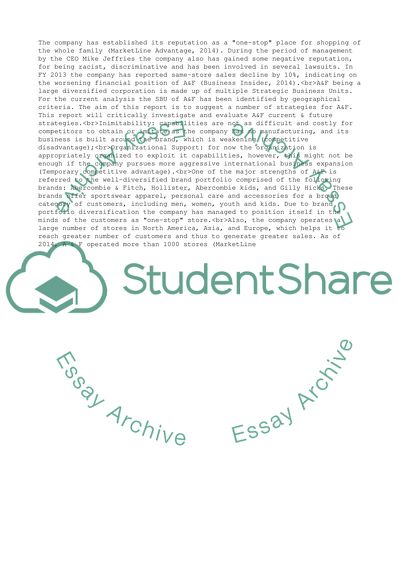Cite this document
(“Analysis of an Organisation (Abercrombie and Fitch) and its Coursework”, n.d.)
Analysis of an Organisation (Abercrombie and Fitch) and its Coursework. Retrieved from https://studentshare.org/business/1675319-analysis-of-an-organisation-abercrombie-and-fitch-and-its-competitive-environment-and-recommendation-of-a-strategy
Analysis of an Organisation (Abercrombie and Fitch) and its Coursework. Retrieved from https://studentshare.org/business/1675319-analysis-of-an-organisation-abercrombie-and-fitch-and-its-competitive-environment-and-recommendation-of-a-strategy
(Analysis of an Organisation (Abercrombie and Fitch) and Its Coursework)
Analysis of an Organisation (Abercrombie and Fitch) and Its Coursework. https://studentshare.org/business/1675319-analysis-of-an-organisation-abercrombie-and-fitch-and-its-competitive-environment-and-recommendation-of-a-strategy.
Analysis of an Organisation (Abercrombie and Fitch) and Its Coursework. https://studentshare.org/business/1675319-analysis-of-an-organisation-abercrombie-and-fitch-and-its-competitive-environment-and-recommendation-of-a-strategy.
“Analysis of an Organisation (Abercrombie and Fitch) and Its Coursework”, n.d. https://studentshare.org/business/1675319-analysis-of-an-organisation-abercrombie-and-fitch-and-its-competitive-environment-and-recommendation-of-a-strategy.


